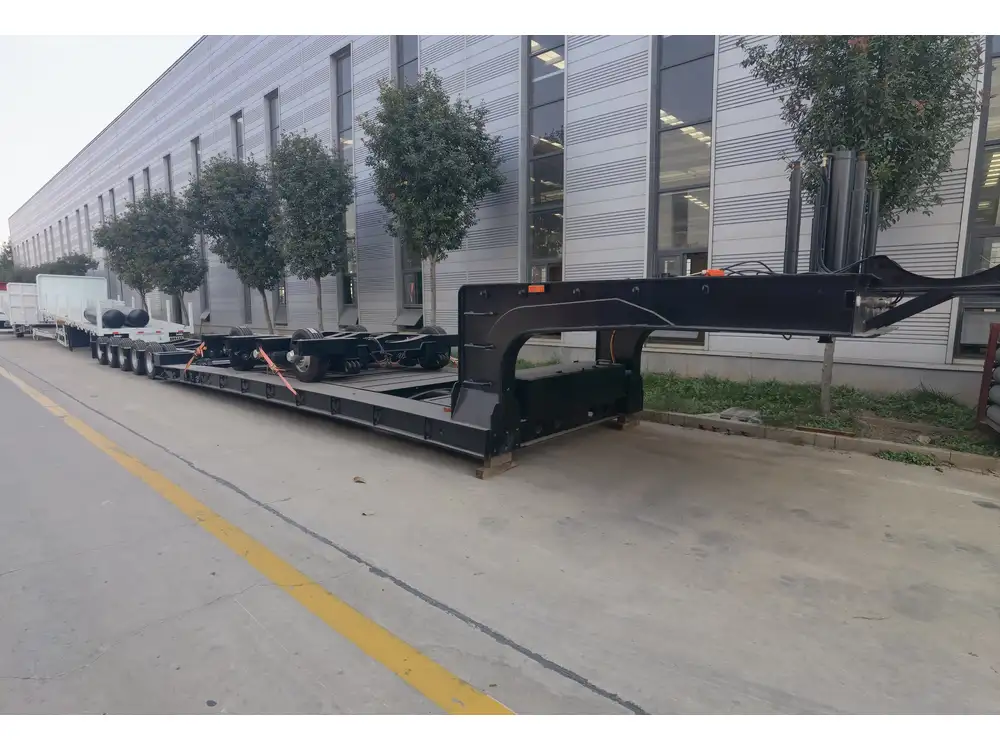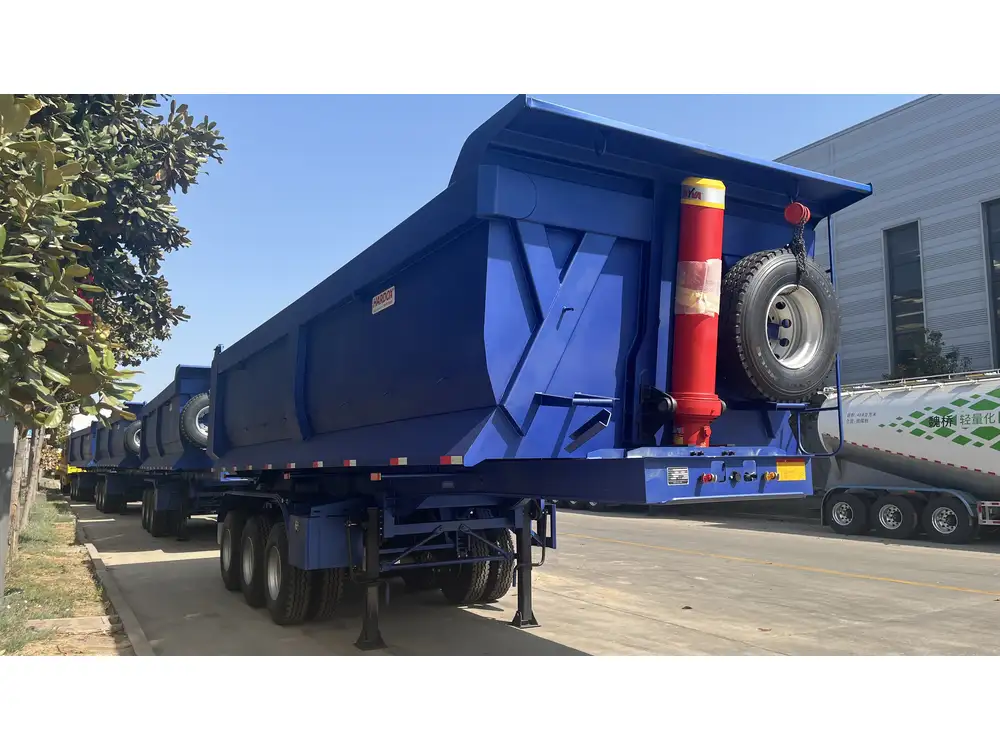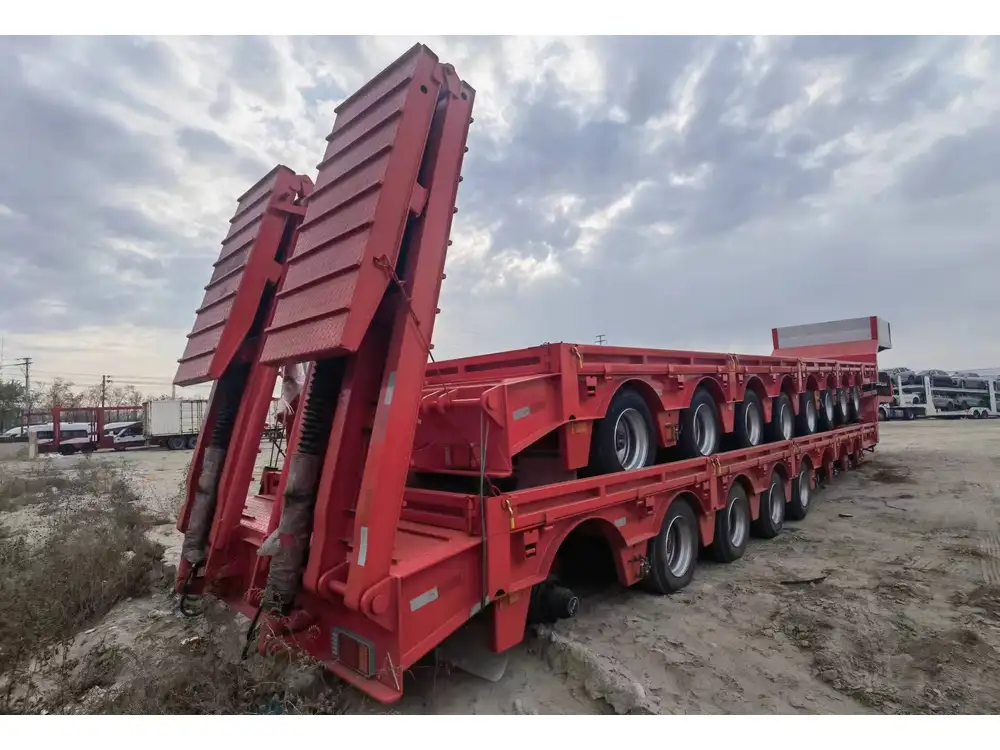When it comes to the transportation industry, the efficiency of semi-trailer trucks in navigating the highways is paramount not only for cost but also for environmental considerations. Understanding the aerodynamic drag of these massive vehicles is crucial for manufacturers and fleet operators alike to enhance fuel efficiency, reduce operational costs, and minimize emissions. This article delves deeply into the mechanics of aerodynamic drag as it relates to semi-trailer trucks, providing insights, methodologies, and practical implications of our findings.
What is Aerodynamic Drag?
Aerodynamic drag is the resistance encountered by a body moving through air. In the context of semi-trailer trucks, it comprises two primary forces:
- Form Drag: This results from the shape of the vehicle. A poorly designed semi-trailer truck increases turbulence and thereby resistance.
- Skin Friction Drag: This is caused by the interaction between the truck’s surface and the air particles flowing over it. Rough surfaces, common in older models, exacerbate the problem.
Importance of Reducing Aerodynamic Drag
Reducing aerodynamic drag is essential for several reasons:
- Fuel Efficiency: Lower drag coefficients translate directly into better fuel economy, decreasing operating costs.
- Environmental Impact: Improved fuel efficiency means reduced greenhouse gas emissions, aligning with global sustainability goals.
- Performance: Enhanced aerodynamics can lead to better stability and handling of the truck at high speeds.

The Fundamentals: Aerodynamics in Semi-Trailer Design
The design of a semi-trailer truck significantly impacts its aerodynamic efficiency. Key factors include:
1. Truck Height and Width
The dimensions of the truck play a significant role. A taller and wider trailer increases the frontal area subject to drag forces. Ideally, lowering the height and optimizing the width can yield better aerodynamic properties.
| Dimension | Effect on Drag |
|---|---|
| Higher Height | Increases drag by increasing frontal surface area |
| Wider Width | Similar to height, more area increases drag forces |
2. Shape and Profile
The geometric shape of semi-trailer trucks can be optimized for improved airflow. Utilizing designs that taper towards the rear—often referred to as “teardrop” shapes—can significantly reduce both form and induced drag.

3. Surface Texture
The texture of the truck’s body affects skin friction drag. Smooth, high-quality finishes subtly improve airflow over the vehicle’s surface, decreasing turbulence and enhancing efficiency.
A Detailed Look at Aerodynamic Testing Methods
To accurately assess aerodynamic drag, several testing methodologies have been developed. Here we explore the most pertinent techniques:
1. Wind Tunnel Testing
Wind tunnel testing involves placing a scale model of the semi-trailer truck in a controlled environment where air can be manipulated to simulate real-world conditions.
Advantages:
- Controlled conditions allow precise measurements.
- Different speeds and configurations can be tested.
Limitations:
- Natural airflow is not fully replicated.

2. Computational Fluid Dynamics (CFD)
CFD uses numerical analysis and algorithms to simulate the airflow around the truck. This method is becoming increasingly popular due to advancements in computing power and accuracy.
Advantages:
- Can analyze complex scenarios that are challenging in physical testing.
- Faster iterations on design modifications.
Limitations:
- Requires significant computational resources and expertise.
3. On-Road Testing
Real-world testing involves outfitting a semi-trailer truck with sensors and measuring devices to collect data as it travels on public roads.
Advantages:
- Provides actual performance under varied conditions.
- Real-time measurements of fuel efficiency and drag.
Limitations:
- Environmental factors can skew data.
Analyzing the Influence of Speed on Drag
The relationship between speed and aerodynamic drag is defined by drag equation:
[ \text{Drag} = \frac{1}{2} \cdot \rho \cdot v^2 \cdot C_d \cdot A ]Where:
- ( \rho ): Density of air
- ( v ): Velocity of the truck
- ( C_d ): Drag coefficient
- ( A ): Frontal area

Effect of Velocity
As speed increases, the drag force increases exponentially due to the ( v^2 ) relationship. This escalates the importance of aerodynamic features at higher speeds.
| Speed (mph) | Drag Force (lbs) | Fuel Economy (mpg) |
|---|---|---|
| 30 | 100 | 12 |
| 50 | 400 | 8 |
| 70 | 900 | 6 |
Evaluating Aero Kits and Accessories
To enhance aerodynamic performance, manufacturers often employ various aerodynamic aids. Below is a breakdown of popular accessories:
1. Side Skirts
Cladding along the sides of trailers reduces drag by minimizing the vortex created by the wheels. Studies show that side skirts can reduce aerodynamic drag by up to 10%.

2. Boat Tails
Boat tails—structures that extend from the rear of a truck—help streamline airflow, reducing wake turbulence. These can lead to significant drag reduction, primarily when traveling at high speeds.
3. Trickle Vents
These small devices can be installed near the front and rear to better manage airflow over the vehicle. They help stabilize and streamline airflow, contributing to a modest reduction in drag.
Material and Structural Considerations
The materials used in the construction of semi-trailer trucks also influence aerodynamic performance. Lighter materials, such as high-strength steel or composites, allow for better fuel efficiency without compromising structural integrity.
| Material | Weight Savings | Impact on Drag |
|---|---|---|
| Standard Steel | Baseline | Average Drag |
| Aluminum | ~20% Savings | Reduced Drag |
| Composite Materials | ~30% Savings | Significantly Reduced |

Case Studies on Aerodynamic Modification
Case Study 1: Leading Truck Manufacturer
A leading truck manufacturer implemented aerodynamic modifications on their models by incorporating boat tails and side skirts. The results were staggering; real-world tests showed improvements in fuel economy by approximately 12% at highway speeds.
Case Study 2: Fleet Operator
A large fleet operator retrofitted their older trailers with advanced aerodynamic technologies. Tracking fuel usage over six months revealed a reduction in diesel consumption by 15%, translating into substantial cost savings.
Future of Aerodynamics in Semi-Trailer Design
Looking ahead, the integration of smart technologies and artificial intelligence will enable ongoing optimization of aerodynamic designs. Real-time feedback can drive continuous improvement in semi-trailers’ shapes and accessories.
Emerging Trends
- Sustainable Materials: The shift towards lighter and more sustainable materials will support both aerodynamic performance and environmental goals.
- Data-Driven Design Improvements: Using analytics from on-road operations to refine designs will become standard practice in the industry.

Conclusion
Understanding the aerodynamic drag of semi-trailer trucks is vital for the future of the transportation industry. Manufacturers and operators who prioritize aerodynamic efficiency will enjoy lower operational costs, improved vehicle performance, and a reduced environmental footprint. Through ongoing innovation in truck design, materials, and accessories, the trajectory of aerodynamic evolution in semi-trailer trucks promises many advancements. As this field continues to develop, attention to detail and a commitment to efficiency will drive success in a rapidly changing landscape, solidifying the necessity for comprehensive studies in aerodynamic principles and their practical applications.



